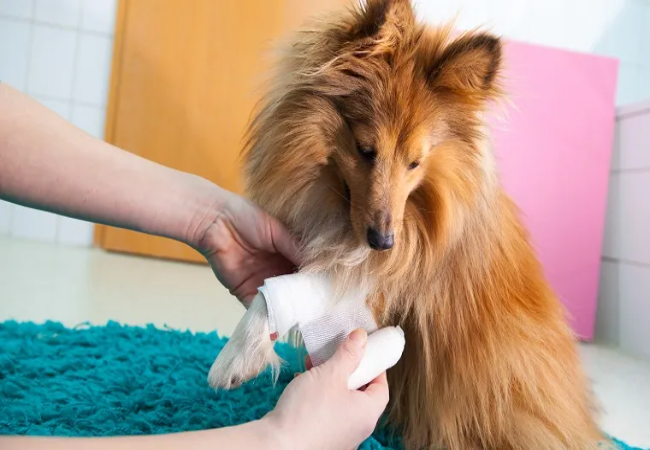Vet Approved Guide: Anaerobic Infections in Dogs – Sources, Signs & 2025 Treatment Strategies 🐶🐾

In this article
Vet Approved Guide: Anaerobic Infections in Dogs – Sources, Signs & 2025 Treatment Strategies 🐶🐾
By Dr. Duncan Houston BVSc
Anaerobic infections arise when low-oxygen-loving bacteria invade deep wounds, abscesses, or the mouth. These infections can be particularly aggressive and require prompt veterinary care. 🛡️
🔍 What Are Anaerobic Infections?
Anaerobic bacteria thrive in oxygen-free environments—such as deep bite wounds, dental abscesses, punctures, or fractured bones. While some are normal flora in the mouth, gut, or vagina, they become harmful when they access tissues where they don't belong.
⚠️ Common Causes & Risk Factors
- Puncture wounds: from bites, thorns, glass, or fractured bones
- Deep dental infections reaching the bone or root canals
- Post-surgical sites or improperly managed incisions
- Infected urinary tract or internal abscesses
- Polymicrobial infections often combine anaerobes like Bacteroides, Clostridium, and Actinomyces with aerobes
🔎 What to Look For (Signs & Symptoms)
- Pus-filled, foul-smelling wounds with discolored, necrotic tissue or gas bubbles
- Warm, painful swelling, often slow to heal
- Fever, loss of appetite, lethargy
- Special cases: pleural abscesses, internal infections causing cough, breathing issues, or organ dysfunction
🩺 How It's Diagnosed
- Physical exam and history of deep wounds or tooth/root issues
- Fine-needle aspiration or culture of wound exudate, ideally anaerobic culture
- Imaging (X-ray, ultrasound) for deep abscesses or bone involvement
- Bloodwork to check for systemic inflammation or infection
🛠️ Treatment Approach
1. Prompt Surgical Care
- Incision and drainage of abscesses, removal of dead tissue, and foreign bodies
- Thorough flushing with sterile solution to aid healing
2. Targeted Antibiotics
- Clindamycin: Gold standard—excellent tissue penetration and anti-anaerobic action
- Metronidazole: Reliable for Bacteroides and Clostridium species
- Chloramphenicol, penicillins, β-lactam/β-lactamase combos: Also effective, depending on likely pathogens
- Avoid aminoglycosides and sulfonamides (ineffective against obligate anaerobes)
3. Supportive & Long-term Care
- Continued wound drainage or use of surgical drains
- Pain relief and anti-inflammatory medications
- Treat underlying dental or bone issues
- Prolonged antibiotic course—often weeks—due to slow healing in low-oxygen areas
📈 Prognosis
When treated quickly and comprehensively with both surgery and antibiotics, many dogs heal well, even from deep anaerobic abscesses. Advanced or untreated cases carry higher risks of chronic infection, systemic spread, or severe complications like organ damage or shock.
📱 Vet‑Approved Support Tools
- Ask A Vet: 24/7 expert guidance on wound care, antibiotic management, and follow-up. 🩺
🎯 Final Thoughts
Anaerobic infections are serious but manageable when treated early with proper surgical drainage and targeted antibiotics. Recognizing deep-infected wounds, foul odor, pus, or slow healing should prompt fast veterinary care—these infections don't resolve on their own. With thorough treatment and diligent follow-up, most dogs heal fully and return to health. 🐾
For personalized advice and peace of mind, download the Ask A Vet app today. 📲🐶






